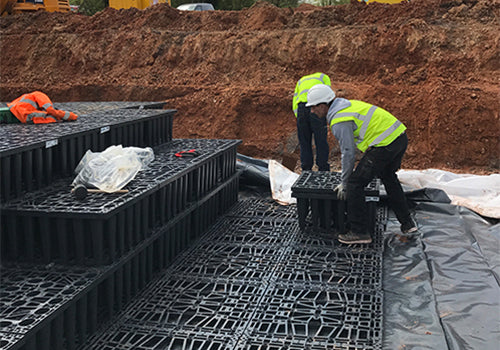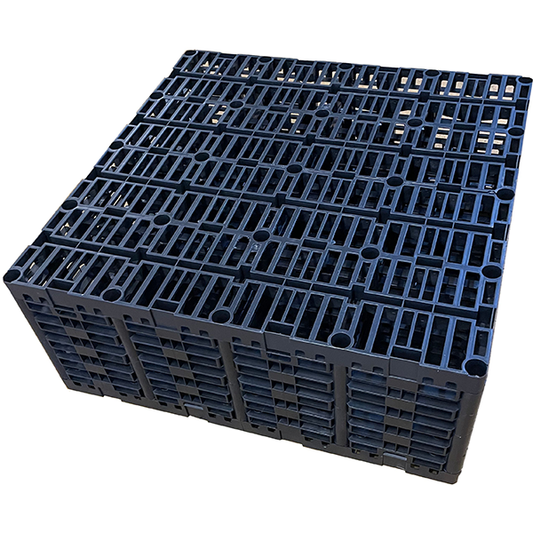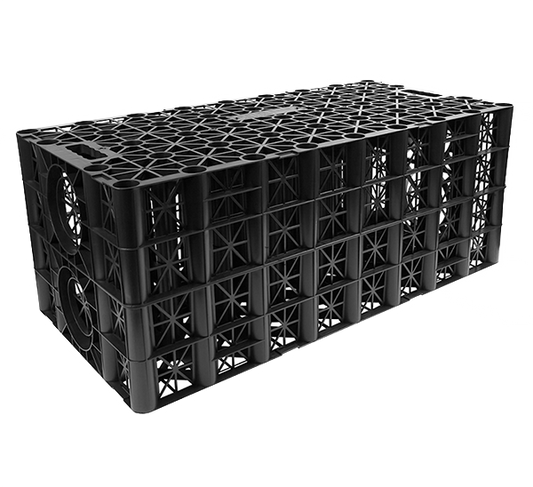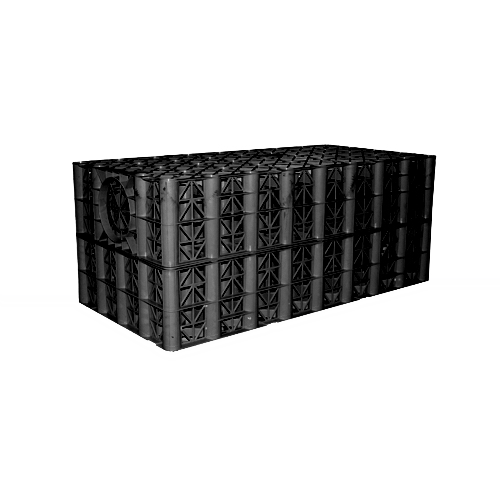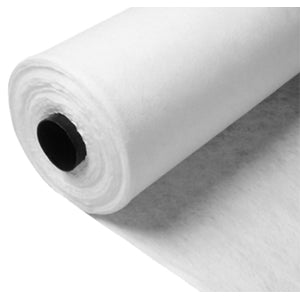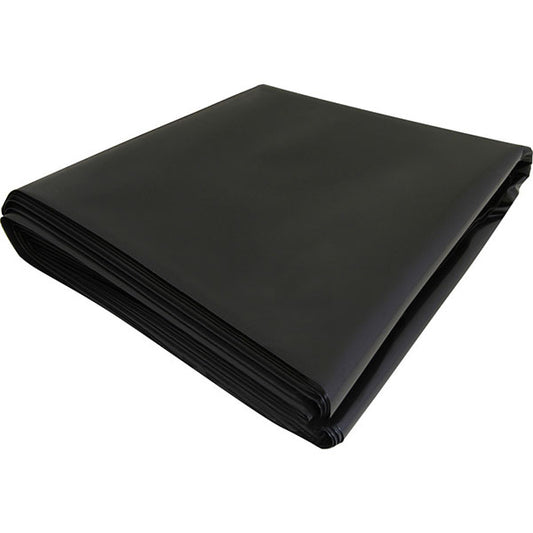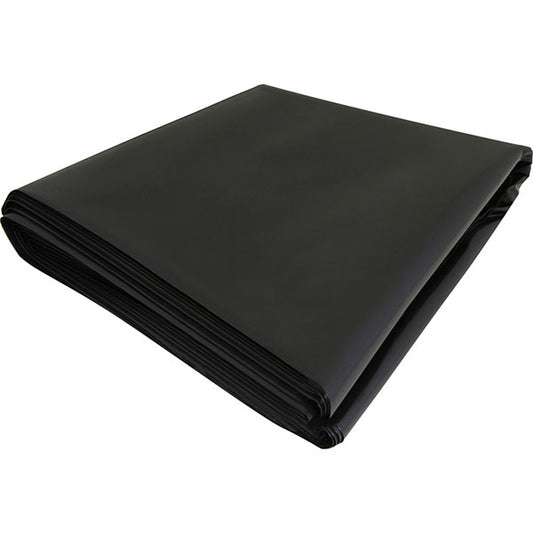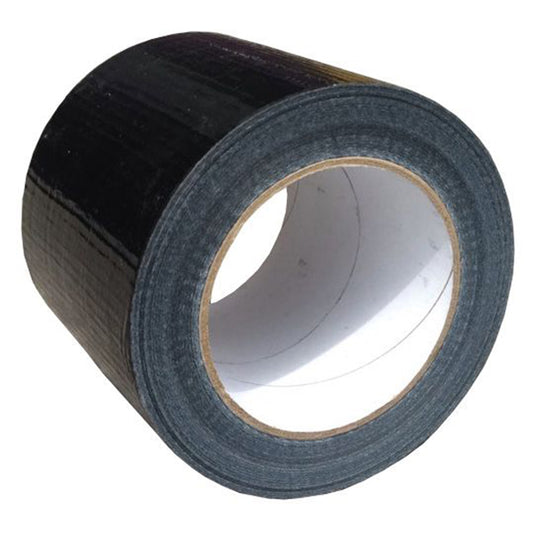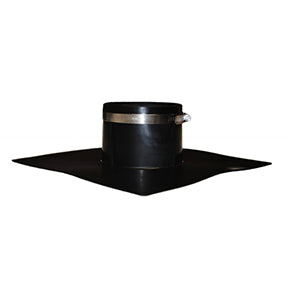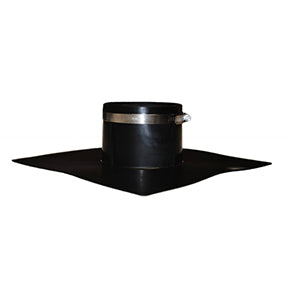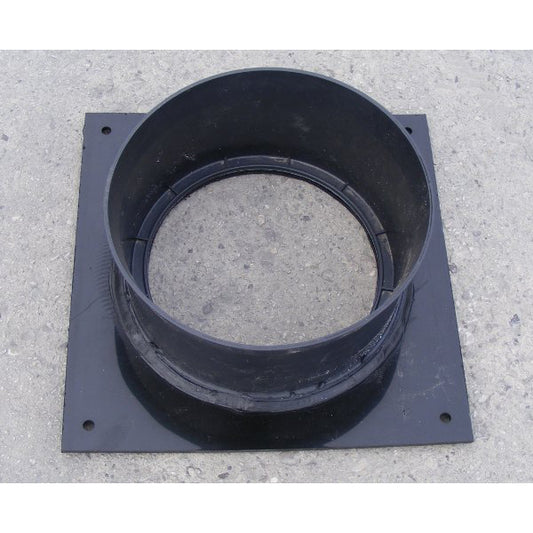Soakaway crate systems play a vital role in preventing flooding by maintaining water levels in your drains. When it comes to their installation, we have put together a guide below for smaller soakaway systems.
In the case of larger soakaway systems, you will need the assistance of specialist installers, such as ourselves.
Contents
What are Soakaway Crates?
Water can build up in your gutters, driveways or French drains, which can cause problems for you and your home if it’s left to filter through your communal pipes.
If this water becomes excessive, it can lead to burst pipes, or worse – flooding – both leading to extensive repair work being required. Building your own personal soakaway can prevent these problems from occurring.
Stormwater crates also work in a similar way and are perfect for groundwater infiltration. They allow up to 97% of their occupied space to fill with water, so are a very effective way to capture rainwater, and can even withstand up to 80-tonne vehicles parking on top of them. They are a lower-capacity solution that is nonetheless quick and easy to set up, inexpensive and basically maintenance-free.
When should you use Soakaway Crates?
Soakaway crates are best used in areas where the ground is covered by impermeable materials, such as tarmac, paving blocks and concrete (i.e. roads, car parks and roofed areas). As such, they are a legal requirement for construction projects.
Crates must be in loamy or sandy soil to maximise efficiency. It’s not advised you install them in clay soil as the clay doesn’t allow water to drain through it.
Before installing soakaway crates, you will need to perform a ‘percolation test’ to determine whether or not the soil is suitable and to eliminate any impending difficulties. It involves 3 test pits being dug, ideally to the depth that the soakaway will be installed and where you will place it, and is completed within 2 days.
Generally, the perfect spot is in the ground – at a lower level than the building – at least 5 metres away from the building itself to eliminate any structural damage.
To summarise, here are some of the do’s and don’ts for installing and using soakaways.
Do:
- Use soakaways for surface water drainage issues.
- Install soakaways on land lower than your property (or at least at the same level) to help water flow into the system and away from your home.
- Choose a soakaway that is big enough to accommodate maximum rainfall, with the correct loading concerning where it will be installed (i.e. gardens are usually 20 tonnes whilst driveways tend to be 40 tonnes).
- Make sure that the sides and bottom of the trench are as straight and square as possible to simplify backfilling and side filling.
Don’t:
- Use soakaways for waste or foul water as this can only clog them up and damage your soil.
- Install a soakaway crate if the area that you live in is heavily polluted and prone to smog.
- Dig a trench for soakaways within 5 metres of your home or a road.
- Install a soakaway in heavy clay soil.
Is planning permission needed?
Contrary to popular belief, planning permission is not required to replace a soakaway within the grounds of your property. However, if you’re installing a new system, it’s worth informing your local planning office beforehand just to be on the safe side.
In most cases, it depends on the type of soakaway – with the building regulations requesting that you seek approval before installing a septic soakaway, drain field or sewage treatment plant soakaway system.
How to install Soakaway Crates
Fancy yourself as a DIY expert? Follow these 6 simple steps to install soakaway crates – both quickly and correctly:
Step 1 – Create space
Excavate the area, making a hole that is the right size for the crates and the top, side and base fillers of gravel and sand.
Step 2 – Prepare the crates
You should receive some clips or ties with the crates. These are used to hook up the crates to prevent movement while the side-filling materials are added.
Always wrap the soakaway crates with a geotextile membrane to maintain the performance of the system.
Step 3 – Prepare the base
A layer of sharp sand or pea gravel should be put into place before the crates are lowered, then the geotextile membrane should be fitted inside the hole, ready for the soakaway crates to sit on top of.
Step 4 – Hook up to the drainage system
Some soakaway crates have a separate section in place for the stormwater pipe to be connected. If not, it can be placed next to the crates and held in place by the side fill. We can provide fabricated inlets for our crate systems.
Step 5 – Cover the crates
To secure the crates, remember to add side and back-fill to the crates. This can be done using sand or pea shingle, which needs at least six inches to be placed around the sides and on the top of your crates.
Step 6 – Replace any ground that was removed
The last step is to replace any ground and turf that was removed or any other relevant surface topping.
Your soakaway crate system is now ready for action!
Need a helping hand?
You’re not on your own. Many builders and developers are finding that managing stormwater is becoming more of a challenge – usually, because they don’t have the required skills or know-how to install soakaway crates themselves.
The good news is, Cotterill Civils is one of the UK’s leading stormwater specialists. We design, supply and install soakaway crates, and know everything there is to know about them. Our soakaway crates are used for a broad range of projects from single house dwellings to large commercial developments.
All of our crates boast high-strength, are lightweight, and incredibly easy to handle. However, we understand that installing a large soakaway crate can be tricky, and some people simply prefer to leave the installation to the professionals. If this rings true with you, call us for expert advice on 0121 351 3230.
Alternatively, fill out our enquiry form:




